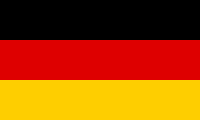 Germany’s economy grew by 62.6% from 1990 to 2005. As of 2005, Germany has achieved an 18.3% reduction in GHG from their 1990 level.
Germany’s economy grew by 62.6% from 1990 to 2005. As of 2005, Germany has achieved an 18.3% reduction in GHG from their 1990 level.
Goals
Germany’s Kyoto Protocol target is to reduce its greenhouse gas (GHG) emissions by 21% below the 1990 level. Their own objective seeks to reduce GHG emissions by 40% by 2020.
Strategies
Germany’s Climate Agenda 2020 plan (1) addresses these four key areas:
- Electricity production and consumption
- Heating
- Transportation
- Other gases
Electrical generation and consumption
The German plan for electricity targets three areas:
- Reduce consumption – They will cut electricity consumption by 11% by
- Increase efficiency of equipment
- improving engine performance in industry
- reducing the amount of power used for standby modes
- Higher generation efficiency– This means building higher efficiency coal-fired and natural gas plants.
- Increase renewables – The plan is to increase the share of renewables in electricity production to 27%. The main features will be
- the continued expansion of wind farming (especially offshore with repowering on land)
- the use of biomass in power plants
Heating
The Germans plan to reduce GHG from heating by targeting three areas:
- Co-generation – They want to double the number of Combined Heat and Power (CHP) units. CHP enables a power station to simultaneously generate both electricity and useful heat.
- Energy efficiency – They intend to address the energy efficiency of buildings by
- modernizing buildings (doubling the pace of modernization)
- converting to more efficient heating systems
- introducing tougher thermal standards for new buildings
- Renewables – The German government’s aim is to at least double the share of renewables (biomass, solar thermal, geothermal) in the production of heat from the 2007 level by 2020.
Transportation
The German plan for transportation addresses six areas:
- CO2-oriented vehicle tax – Germany has a tax on all new road vehicles that is dependent on their fuel consumption.
- Biofuels – The EU has agreed that by 2020 renewable energies should account for at least 10% of fuel consumption in Europe. Germany plans on an increase of biofuels to 8% of consumption by 2015. Second-generation biofuels such as biogas and BTL (biomass to liquid) will play a role in achieving targets above this level.
- Increase freight transport efficiency – The German plan includes optimized logistical processes (e.g. by avoiding empty runs) and eliminating bottlenecks at multimodal interfaces.
- More rail – Moving people by rail produces 1/3 the CO2 of going by car. The German government wants to make rail travel more cost competitive.
- Air travel – The impact on the climate of taking a plane is nearly five times as high as taking a car and emissions from air travel is growing fast. Germany supports the competition-neutral inclusion of air travel in European emissions trading.
- CO2 limits for cars – Germany is debating how to interpret and implement the European Commission proposal to cap average greenhouse gas emissions from cars at 120 g/km by 2012. German auto makers produce large powerful cars that may not be able to meet this requirement.
Other gases
Many of the other GHG gases targeted have higher global warming potential than CO2
- Methane – Germany plans to increase capture of methane from land-fills. Methane can be used as a heating fuel which would divert the gas from release and also reduce the use of fossil fuels for the same purpose.
- F-Gases – Fluorinated gases (F-gases) are very long-lasting and have very high warming potentials compared to CO2. Primarily these gases are used as refrigerants, propellants, and for fire suppression. There are climate-friendly alternatives for almost all of the F-gases. Germany intends to move to alternative gases that are already available or are in development.




